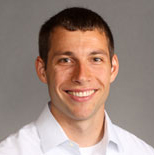How Actuarial Practice is Evolving with Life Insurance
Connected technologies and advanced modeling are giving life insurance much more data to mine. Actuaries work seamlessly with automation technology to unleash insights from big data, adding the human touch and business acumen to machine learning.
As data sharing becomes more frequent, actuaries can craft more personalized policies that can better incentivize healthy behavior, leading to long-term outcomes for customers and more savings for employers.
It’s an exciting time for actuaries using predictive analytics in life insurance. Learn more about the unique journeys of actuaries working in the industry.
As a leader within Actuarial and Analytics Consortium, Dorothy applies her knowledge in statistical and data analytics to help her life insurance clients build predictive analytics marketing applications that better segment customers. She believes opportunities for actuaries are everywhere, but they must not be ready to venture beyond traditional boundaries.
The former high school math teacher has worked closely with mathematicians, statisticians and economists at a major bank to learn about IT architectures and protocols. She’s also partnered with IT professionals at an insurance company and built the predictive analytics engine for the USDA's new Public Health Information System. Each experience has informed the work she does today.
Dorothy's advice for actuaries looking to become skilled modelers: "A modeler needs to distinguish between statistical noise and true statistical signal in underlying data. They also need developmental questioning skills and an inclusive communication style because models don't build themselves; people do."
To learn more about Dorothy’s work in predictive analytics, click here.
To learn more about Dorothy’s career path, click here.
 Robert Eaton, FSA, MAAA and Consulting Actuary at Milliman
Robert Eaton, FSA, MAAA and Consulting Actuary at Milliman
Meet Robert Eaton. Robert started college wanting to become a math professor, and instead became interested in actuarial science. His academic side never left him and led him to an interest in predictive analytics. As an actuary working with predictive analytics, Robert has seen the way predictive modeling can help companies make smarter, more accurate decisions.
Robert recently completed the SOA predictive analytics certificate program, which provided both a strong theoretical background as well as practical, hands-on experience that he can apply to the decisions he and his team make every day.
Robert’s advice to actuaries interested in the SOA predictive analytics certificate program: “Predictive analytics is the future for actuaries and something we as an industry need to embrace. We see the tools that we're going to use, the data capabilities that we'll have in the next 5, 10, 20 or 30 years, and it will only continue growing in importance with the increase of data and rise of new technologies.”
 Steve Fredlund, FSA - Workforce Analytics Manager, Allianz Life
Steve Fredlund, FSA - Workforce Analytics Manager, Allianz Life
Meet Steve Fredlund. As a trailblazer in workforce analytics, Steve combines his analytical skills, leadership abilities and business experience to predict future outcomes and optimize business results. He works with his team at Allianz Life to establish a road map for the future or workforce analytics, including a foundation built on systems, data and automation.
Prior to this position, Steve spent 16 years as an actuary for a Fortune 500 not-for-profit financial firm where he gained extensive knowledge of business procedures, management and investment expertise to complement his actuarial training. Steve credits his actuarial experience with providing him a unique perspective to see the connections between workforce modeling and the company's long-term goals.
Steve's advice for anyone considering new opportunities using predictive analytics: "Predictive analytics will embed itself in all major technical, social and societal issues-everything from car insurance to security to nonprofit work. So, the question may not be how to get into analytics but how to incorporate analytics into whatever you decide to do."
Read The Actuary article about Steve Fredlund's path to workforce analytics.
 Paula Hodges, FSA, MAAA, Second Vice President, Associate Actuary at Ameritas Life Insurance
Paula Hodges, FSA, MAAA, Second Vice President, Associate Actuary at Ameritas Life Insurance
Meet Paula Hodges. Paula Hodges started her professional life in IT. After becoming an actuary, she built her career around helping IT departments and actuaries integrate their work.
As predictive analytics and data quality become more important to the insurance industry, Paula sees a greater need for her brand of cross-departmental communication and integration. In fact, Paula believes her non-traditional career path as an actuary has helped her and the teams with which she works. One of her most recent projects was improving on Ameritas’ modeling process where she established an independent model development team. Thanks to Paula’s dual background in IT and actuarial work, she understands how to communicate with both tech teams and actuarial teams, allowing her to start the modeling process from the ground up.
Paula believes there are plenty of career opportunities for actuaries. Her advice for those looking to get into the field: “You have to open the door to think about what fields use data, and what fields have risk associated with decisions made based on that data. That’s the intersection where there's a bright career for either a seasoned or entry-level actuary looking to expand their skills in predictive analytics.”
Meet Christine Hofbeck. Christine is pushing the boundaries of traditional life and general insurance by finding problems and fixing them with new technology, modeling methods and sources of data. Most recently, she built a predictive analytics team at one of the world's largest financial services institutions to support the pricing team for a $5 billion portfolio covering life, disability, critical illness and more.
Christine does not back down from challenging problems. Instead, she approaches them from multiple angles to find the most accurate outcomes benefiting both insurers and customers. That means building the best cross-functional team, leveraging business process expertise and activating her actuarial training for the ultimate end goal-pricing risk better.
Christine's advice to employers looking to expand their implementations of predictive analytics:" We need leaders. Predictive analytics within the life space is in dire need of leaders who understand the complete modeling process and can build capabilities and lead teams."
Read The Actuary article about Christine Hofbeck's work with predictive analytics.
 Winnie Liu, FSA, FCIA - Head of Actuarial Modeling and Experience Study, Munich RE
Winnie Liu, FSA, FCIA - Head of Actuarial Modeling and Experience Study, Munich RE
After 20 years in the insurance industry, Winnie Liu set her sights on something new: earning a Predictive Analytics (PA) Certificate from the SOA.
Winnie had this to say about the program: “The SOA’s Predictive Analytics Certificate Program empowered me to continue my professional development and career growth with the latest, cutting edge predictive analytics techniques and tools. As a result of the program, I’m able to incorporate predictive analytics and data science into my actuarial career – a path I didn’t know was an option for me.”
Since finishing the program, Winnie has moved from Canada to Singapore as Munich RE’s head of actuarial modeling. With a firm grasp on programming language R and experience with Python—as well as the tools to streamline underwriting solutions, detect fraud claims, analyze business risks and customize pricing—she has maximized her education.
In her current role, Winnie hires students with a background in statistics and machine learning and helps them gain a better understanding of predictive analytics and how to apply it to their work. For Winnie, this is the future of the actuarial profession.
To learn more about how the program has helped her advance both professionally and personally, click here.
Meet David Moore. David started his actuarial career at Deloitte in Chicago where he spent several years working in a traditional actuarial role. Through his work, David did some consulting as well, which served as his introduction to using predictive analytics in life insurance.
Today, David works for Nationwide where he uses predictive analytics to help improve the customer experience. David has seen how the life insurance industry has been disrupted by new technology. As a result, David’s company and others continuously seek innovative approaches to engage with customers using data and analytics.
David’s advice to actuaries interested in introducing predictive analytics to their organization: “Innovation can start at the bottom, but you really need someone in an executive role championing that from above. If you don't have that, then I would advise you to talk to your leadership, talk to your boss and, make some noise about what other companies are doing with predictive analytics.”
 Timothy Paris, FSA, MAAA, CEO of Ruark Consulting, LLC
Timothy Paris, FSA, MAAA, CEO of Ruark Consulting, LLC
Meet Timothy Paris. At the start of his career, Tim didn’t plan on taking an actuarial path, but that quickly changed when he signed up for several math courses in college and ultimately decided on a degree in mathematics.
Early on in his career, Tim took a job as an actuarial student at a startup insurance company. As the only actuarial student, supporting the company’s only actuary, Tim gained valuable skills and exposure to every actuarial function within the company. Today Tim is the CEO of Ruark Consulting, LLC, which aims to be the platform and industry benchmark for principles-based insurance data analytics and risk management.
Tim's advice to actuaries looking for a nontraditional start to their career: “Try not to think of predictive analytics as something new. We are using newer and better tools, but we are still using our actuarial skill set to help our companies and clients better address their business challenges and financial risks, same as ever.”
 Nathan Pohle, FSA, CERA, MAAA - Manager, Deloitte Consulting
Nathan Pohle, FSA, CERA, MAAA - Manager, Deloitte Consulting
Meet Nathan Pohle. Nathan is part of a new wave of actuaries bringing diverse perspectives to change the game in life insurance. Armed with an MBA and unique analytics experience in the sports industry, Nathan is harnessing key learnings from Silicon Valley to help life insurance companies tap into the power of predictive analytics in new ways.
As a manager on Deloitte Consulting's predictive modeling and analytics team, Nathan collaborates with data scientists, underwriters, marketers and other professionals to help clients improve existing underwriting, pricing and risk management processes. His team helps insurance companies improve the customer experience while growing their bottom line with fewer screening needle pricks and more data.
Nathan's advice for actuaries seeking new avenues to expand their skills: " Actuaries can step up and be the leaders. Data scientists have the data and know how to interpret it, but actuaries know how to use it to help achieve business goals."
 Nazir Valani, FSA, FCIA, MAAA - President, Valani Global
Nazir Valani, FSA, FCIA, MAAA - President, Valani Global
Nazir’s actuarial background and experiences in software implementation and predictive analytics, as well as his relentless drive, culminated in starting his own business, Valani Global. He works with software developers, IT managers and life insurance companies to implement programs to develop more accurate models. Nazir’s business is a continuation of his career accomplishments—growing the actuarial practices of every business where he has worked.
Nazir believes the FSA certification program gave him the necessary skills to venture into the predictive analytics world and emerge as a versatile actuary ready to take on any data challenge. He got to flex those FSA skills at KPMG overseeing audits, pension, life insurance and AXIS implementation to update international financial reporting standards.
His advice to actuaries looking to make an impact on their industry: “You have to go above and beyond. At one point in my career, my boss came to me and said he’d heard if there’s an impossible task, give it to me, and tell me it’s impossible—and I’ll get it done.”



